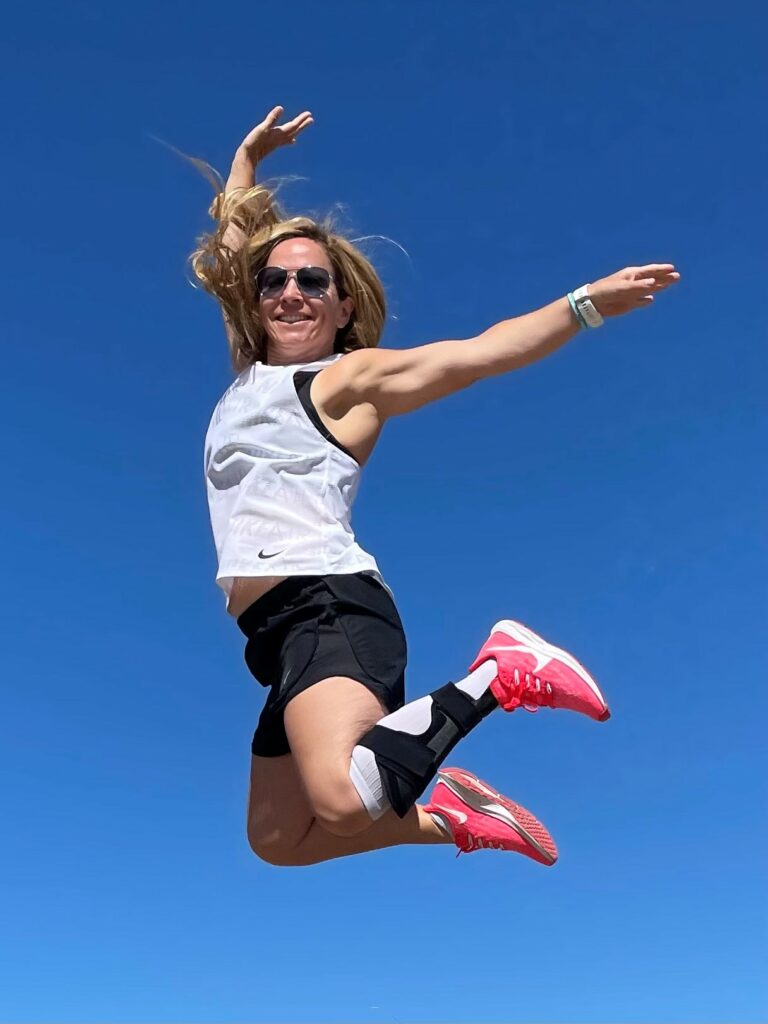 Sponsored content from Allard USA. The FSHD Society provides this content for educational purposes and does not endorse any products or services. Always consult a healthcare professional about the use of any medical products.
Sponsored content from Allard USA. The FSHD Society provides this content for educational purposes and does not endorse any products or services. Always consult a healthcare professional about the use of any medical products.
The decision to use a medical brace, or orthotic, is a major milestone for many people with FSHD. A dreaded one, oftentimes, because it’s an undeniable sign that your muscles have gotten weaker. You can no longer just “tough it out.” Your body needs help. But you may fear that braces are uncomfortable or that they signal to those around you that you have a disability. These negative ideas can cause people to resist getting a brace. But not using a brace or other assistive devices increases your risk of falling. Falls are not only humiliating, but dangerous. You could break your nose or jaw, knock out teeth, sustain a brain injury, or shatter a bone. A broken leg can lead to loss of the ability to walk independently, because when you have FSHD, it is much harder to recover the muscles that atrophy when your limb is immobilized in a cast.
If you think you may need a brace but find yourself resisting the idea, perhaps you are harboring some myths, and it’s time to bust them! Read on:
Myth: You must stay with the orthotist (brace specialist) your doctor recommended for you.
Fact: You should always choose an orthotist you feel most comfortable with, and who understands what your goals and expectations are for your orthotic care. Good communication is vitally important, so if you feel you aren’t being heard there is nothing preventing you from finding another provider.
Myth: Wearing an AFO will make you weaker.
Fact: This really depends on the brace. Some models can lead to muscle atrophy but many models that are dynamic, floor-reaction AFOs can actually improve overall strength and balance. It is important to fully understand what models are being recommended for you before you commit.
Myth: Your orthotist always knows what’s best for you.
Fact: Orthotists are like everyone else, they sometimes don’t have all the information they need to make the very best decision for you. YOU are the most important source of information for them; they must understand your condition, your current level of activity and what your goals are for the future. You may also have heard from others with FSHD that some AFOs work better than others; many orthotists are not experts on FSHD and will recommend a brace they feel keeps you “safe” rather than “safe and active.” Do not be shy about speaking up, asking questions and doing your own research!
Myth: I can’t wear nice shoes with my AFO.
Fact: These days there are many manufacturers who have responded to demands from orthotic-wearing customers. See Allard’s Shoe Guide for what to look for in a shoe and what makes/models are available for purchase.
Myth: My AFOs hurt but there’s nothing I can do about it.
Fact: An AFO should never hurt! Most AFOs are meant to be custom-fitted and adapted for optimum comfort and function. There are many ways an AFO can (and should) be adjusted to best fit the individual’s anatomy and needs.
Myth: There is an AFO that is considered the best of all other models.
Fact: Although there are some AFOs that offer many more features and benefits than others, there is not one best brace. No one brace will work for every person. The key is to work with your orthotist to find that one best brace that works for YOU and your needs.
Myth: I have to wear a larger shoe with my AFOs.
Fact: Although it’s true that some models may require you to size up to accommodate your AFO, many models have a small footprint (literally!) and will fit just fine in your regular shoe size.
Myth: My activities will be restricted when I wear AFOs.
Fact: This largely depends on the type of AFO you wear, your condition, and activity level. In some cases, your activities might need to be modified so your body works better with the device. A person who starts wearing an AFO will often be able to return to previously loved activities that they didn’t feel safe participating in with no support.
Myth: All AFOs are the same so I can just purchase a less expensive one from Amazon.
Fact: Different AFO’s offer different levels and types of functionality. AFO’s prescribed by an orthotist also offer higher quality materials than ones you would find online. It’s important to talk to your orthotist not only about what AFO might be right for you, but how that AFO can be modified to work with your foot. They can better direct you towards a product that would work for your specific condition and activity level.
Question? Visit www.getbackuptoday.com.


Leave a Reply